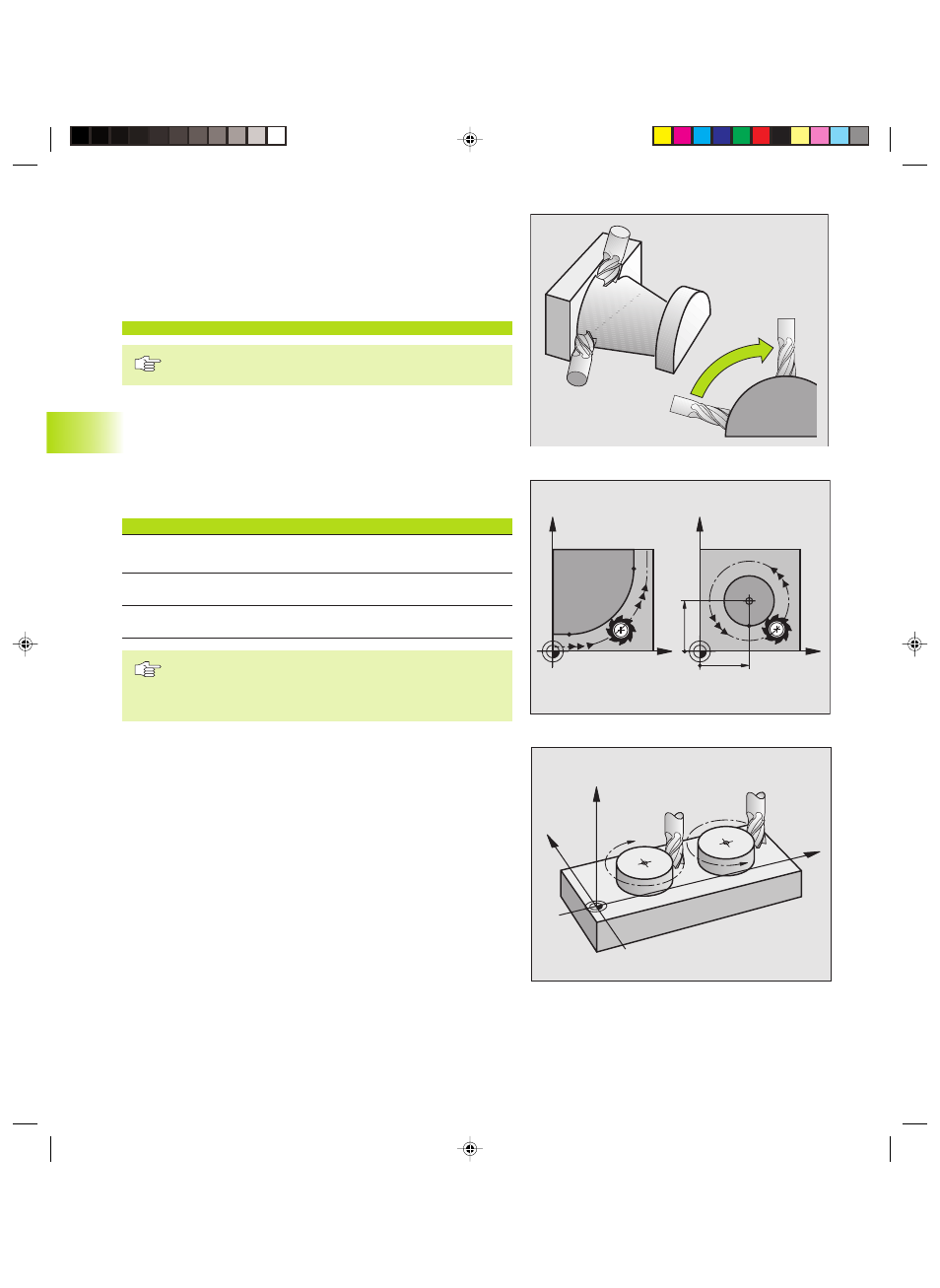2 f undamentals of p ath f unctions – HEIDENHAIN TNC 426B (280 472) ISO programming User Manual
Page 114

98
6 Programming: Programming Contours
Entering more than three coordinates (not TNC 410)
The TNC can control up to five axes simultaneously (for example,
three linear and two rotary axes).
Such programs are too complex to program at the machine,
however, and are usually created with a CAD system.
Example:
N50 G01 G40 X+20 Y+10 Z+2 A+15 C+6 F100 M3 *
The TNC graphics cannot simulate movements in more
than three axes.
Circles and circular arcs
The TNC moves two axes simultaneously in a circular path relative
to the workpiece. You can define a circular movement by entering a
circle center.
When you program a circle, the TNC assigns it to one of the main
planes. This plane is defined automatically when you set the
spindle axis during a tool call:
Spindle axis
Main plane
Circle center
Z (G17)
XY, also
IJ
UV, XV, UY
Y (G18)
ZX, also
KI
WU, ZU, WX
X (G19)
YZ, also
JK
VW, YW, VZ
On the TNC 426, TNC 430 you can program circles that
do not lie parallel to a main plane by using the function
for tilting the working plane (see section 8.9) or Q
parameters (see Chapter 10).
Direction of rotation for circular movements
When a circular path has no tangential transition to another contour
element, enter the direction of rotation:
Clockwise direction of rotation: GO2/G12
Counterclockwise direction of rotation: G03/G13
X
Y
X
Y
I
J
G02/G12
G03/G13
X
Z
Y
6.2 F
undamentals of P
ath F
unctions
Gkap6.pm6
29.06.2006, 08:06
98
